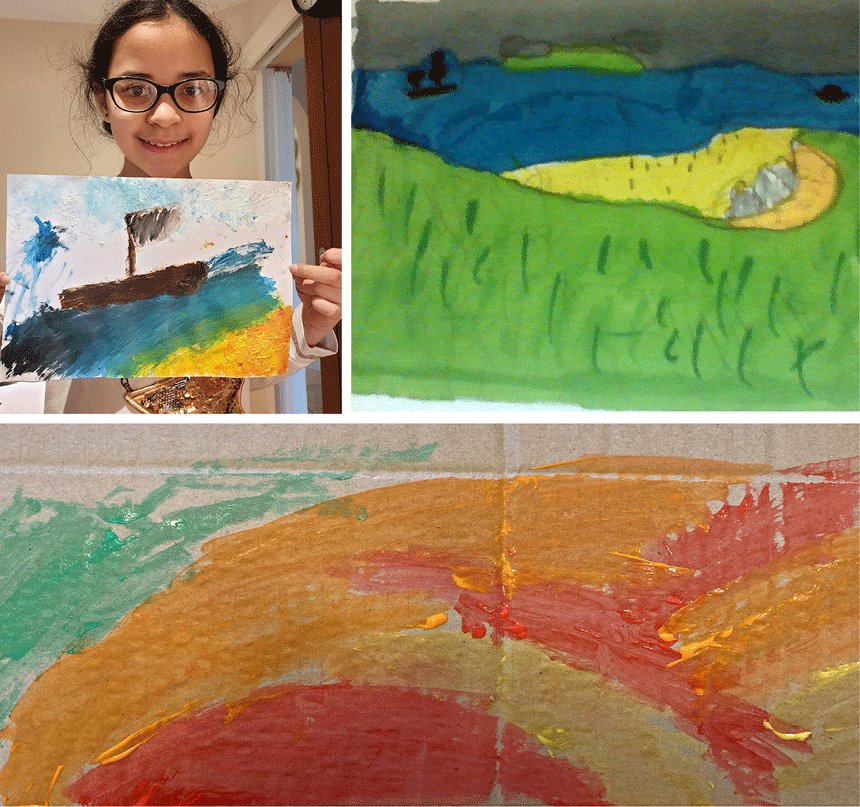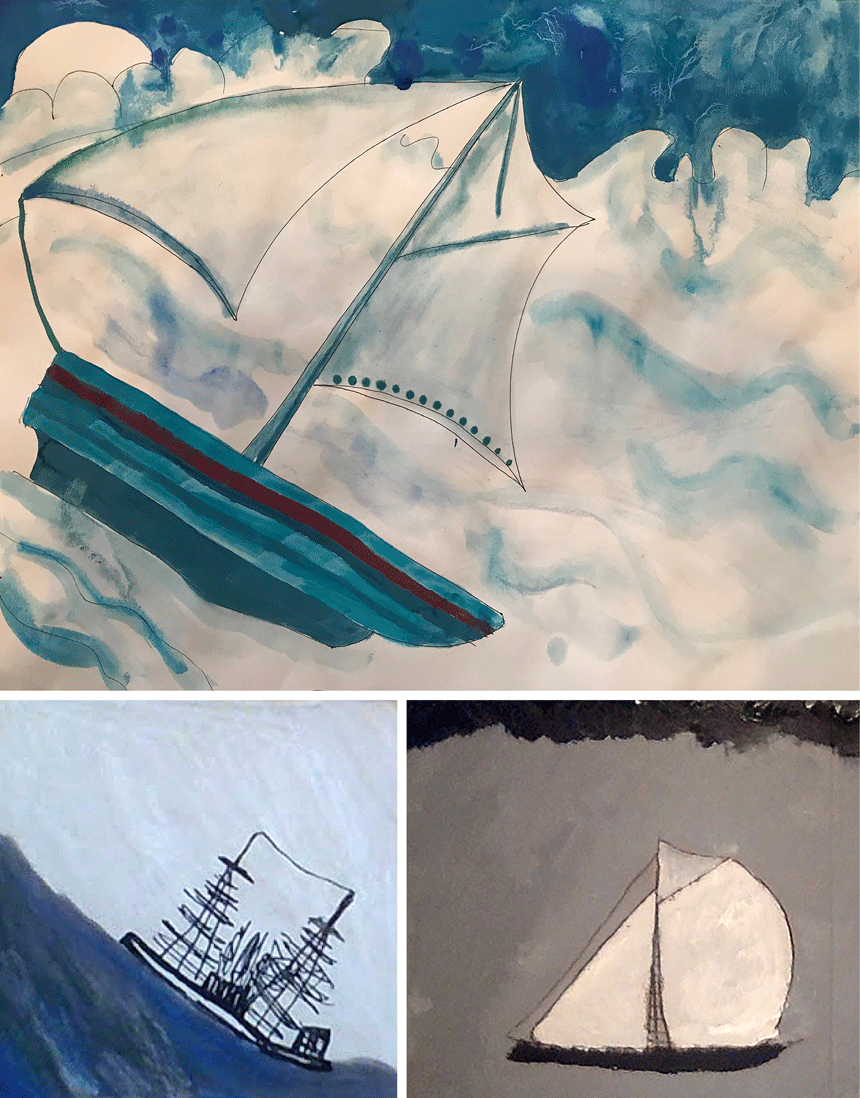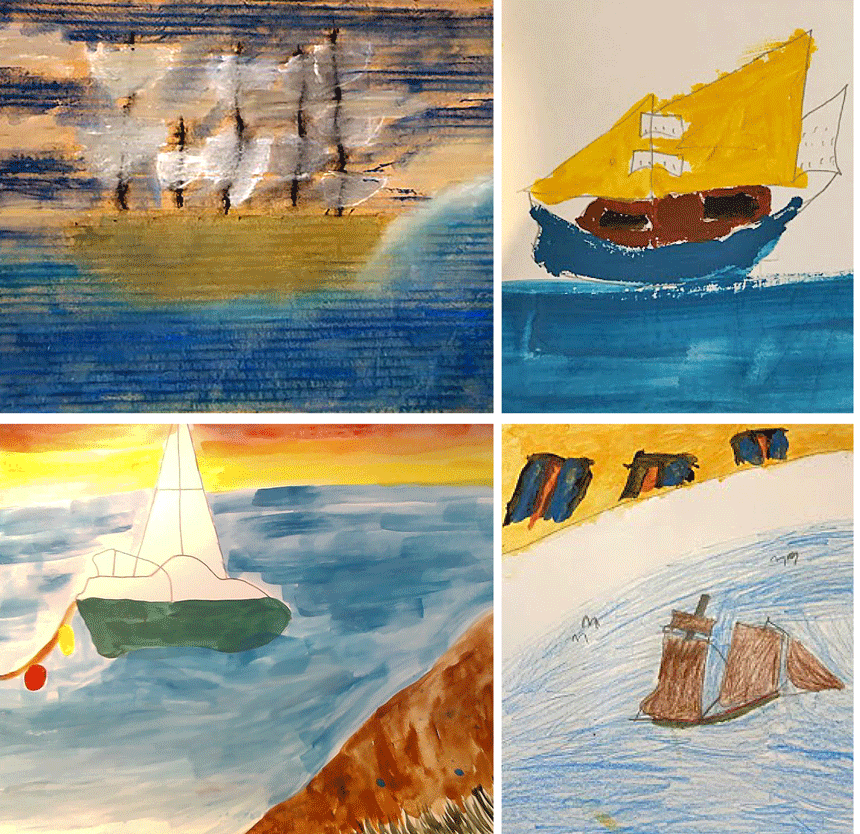Forms 3 and 4 have been studying the work of Cornish artist and fisherman, Alfred Wallis. Having watched a clip from local gallery, Kettle’s Yard's ‘Alfred Wallis Rediscovered’, the children were encouraged to paint using memories of their own seaside holidays and how they too could use recycled materials as Wallis had, such as leftover wood and paint from boat building.

Alfred Wallis influenced painters who came to St Ives from London; they were struck by his naive style and subsequently changed their work to be simpler and more direct because of this. Wallis (1855–1942) took up painting at the age of 67 and painted on discarded wood and cardboard as he had few resources and used whatever was available. Wallis' simplistic, childlike images of the sea became fashionable amongst members of the art elite of the 1930s, owned by everyone from the artist Ben Nicholson to Jim Ede, at that time Assistant at the Tate Gallery. This popularity has meant that today Wallis' paintings can be seen in galleries across the country, where they are heralded as the work of an innate artistic talent who took the twentieth-century art world by storm.

As the children watched the clip about the artist they were encouraged to notice how Wallis used simple shapes and earthy colours in his paintings and to question not only why he did this but what effect this created. They also discussed the types of images and objects he liked to paint and how the Cornish environment may have inspired him. The children created their own, Wallis-inspired, paintings using any materials they had available at home. Head of Art, Mrs Sam Downer explained, ‘You can get an exciting painterly effect by using pencils and felt pens and the brushing a little bit of water over the felt pen marks and colour.’ For the subject of their paintings or drawings, the children remembered a time at the seaside or thought about the River Cam with its punts and houseboats. One of the aims was to draw and paint in the same simple way as Alfred Wallis and to work from memory and imagination.
For more information about the Wallis Collection at Kettle's Yard: Alfred Wallis
